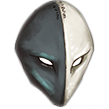When populating a hexploration map, keep in mind that you have little control over which areas the players choose to explore first—or if they’ll explore those areas at all. Because hexploration leads to nonlinear, player-guided play, consider providing hooks within encounters and sites for them to explore in several directions from their starting point. You can provide some direction by presenting jobs like exploring a site on behalf of an NPC, escorting travelers, delivering goods, or scouting a region for a local noble. This typically leads to a set encounter (see below).
Even a sandbox adventure has a story or is the setting of multiple stories. Set encounters, be they just a simple encounter or an entire adventuring site, can serve as important beats in the story behind the PCs’ exploration. These are typically the points on the hex maps the PCs are searching for, and the discovery of one set encounter will often incorporate story points that lead to the next.
You can instill additional danger into your hexploration by including random encounters, whether they take the form of interesting features, natural hazards, or creatures native to the terrain. It can help to create a series of short lists in advance, each including a mix of three types of encounters: harmless, hazards, and creature encounters. Then create tables to randomize the results, or simply pick whichever encounter you think would work best for your hexploration narrative when these encounters occur (as described in Random Encounters on page 209). It's often easier to create a list by terrain rather than for each hex. The forest hexes could have their own random encounter list while the plains beyond have a different list, possibly with some overlap.
A harmless encounter is just that: the party is in no danger from it. Harmless encounters can be opportunities to flesh out the world with interesting bits of set-dressing, like a shrine on the side of the road dedicated to a minor god, opportunities for the party to interact with other travelers, or simply interesting or noteworthy moments on the road, like a distant and dazzling electrical storm.
Hazard encounters can include those located in the Hazards section on pages 98–108, primarily the environmental hazards and haunts. You can also create your own hazards (page 109).
Creature encounters can use the creatures found in Monster Core, or you can create your own using the rules found in Building Creatures on page 112.
Plan your hazard and monster encounters with a degree of flexibility so you can tailor them to the PCs' current level, perhaps by creating a lower-level encounter and including notes on how to scale it up. Alternatively, if you want to run a more challenging or open-world hexploration, don't adapt to your players at all. Make a variety of encounters, some of which are so powerful that the correct tactic is to flee. You can even create a chase to make the escape exciting (see Chases on page 192).
While each hex should have a predominant terrain type, your terrain can come alive using the info in the Environments section on pages 90–97. A hex might also include a river or road. These can cut through the terrain, making it easier for the PCs to travel through the hex, so long as they follow the path. Additionally, each hex might have special features like resources and secrets (see the Types of Terrain sidebar on page 209).
 Licenses
Sources
Licenses
Sources
 Contact Us
Contributors
Support the Archives
Maximize Menu
Contact Us
Contributors
Support the Archives
Maximize Menu
 Licenses
Sources
Licenses
Sources
 Contact Us
Contributors
Support the Archives
Contact Us
Contributors
Support the Archives









